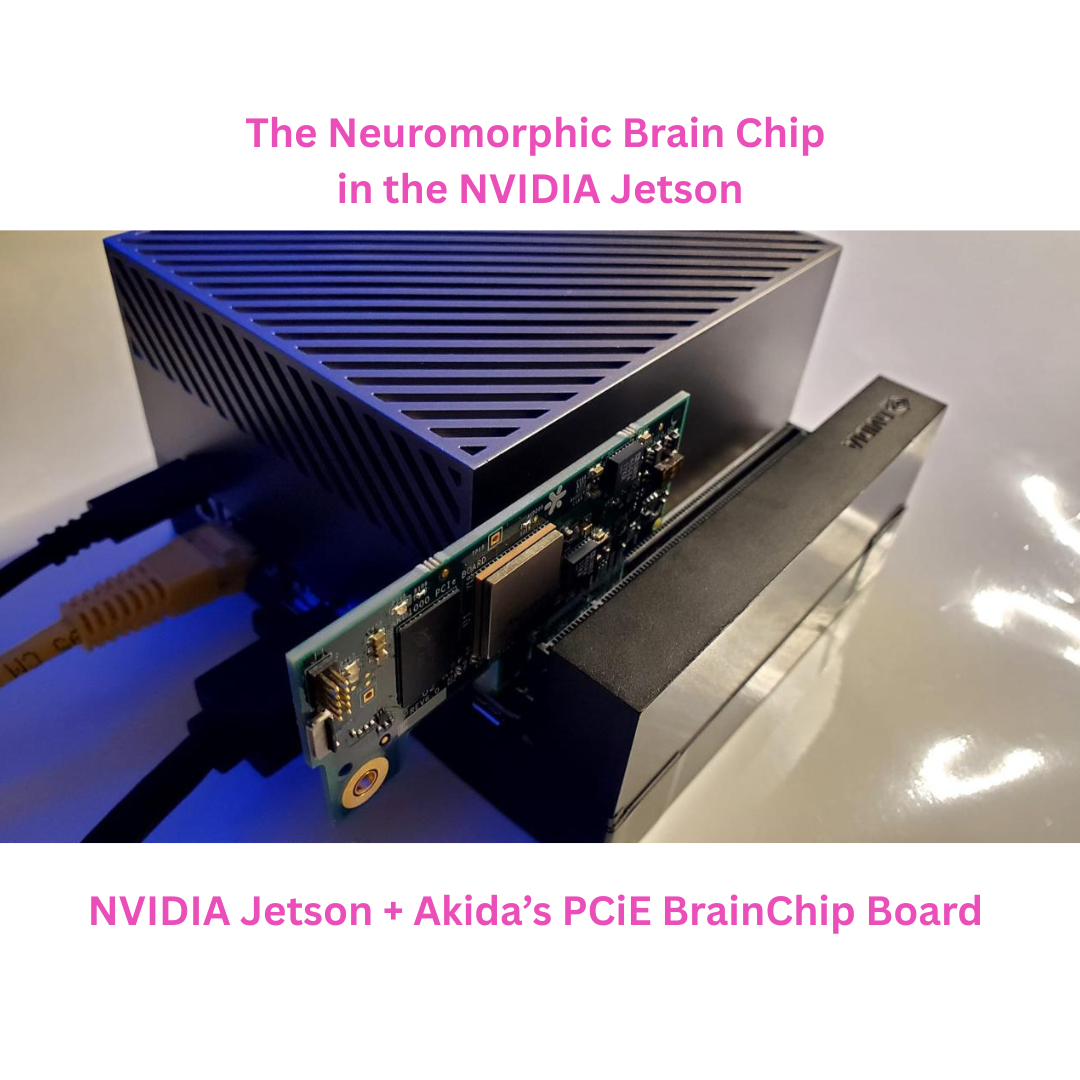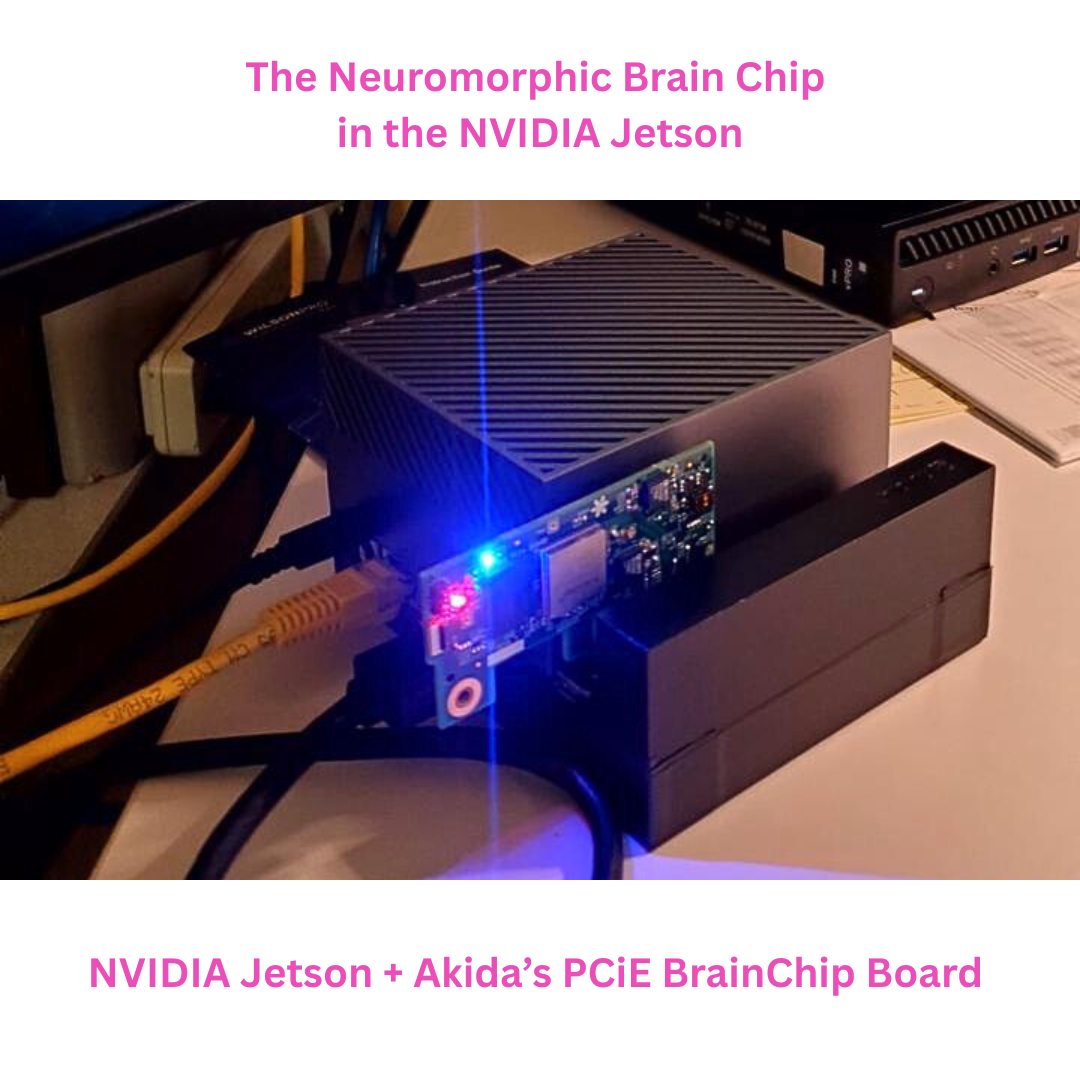Neuromorphic Brain Chip in NVIDIA Jetson: How the AI Cowboys Are Rewiring AI from San Antonio
Neuromorphic Brain Chip in NVIDIA Jetson: How the AI Cowboys Are Rewiring AI from San Antonio

Artificial intelligence has always been powerful—but also power-hungry. Today, AI systems consume about 2% of the world’s total electricity—as much as some entire nations. That’s unsustainable as AI adoption continues to skyrocket. But what if AI could think like the human brain, firing only when it needs to, instead of chewing through power nonstop?
That’s the promise of neuromorphic computing—and the AI Cowboys are making it real inside an NVIDIA Jetson Orin AGX at our UTSA AI Lab in San Antonio.
What Is Neuromorphic Computing? (The Brain in Silicon)
Traditional chips act like calculators on overdrive. They are always running, constantly consuming power, even when idle. Neuromorphic chips flip the model. Inspired by biology, they only activate when signals arrive, just like neurons in your brain.
This is achieved through Spiking Neural Networks (SNNs). Instead of continuous number-crunching, SNNs transmit short bursts—“spikes”—of information, dramatically reducing energy use while enabling brain-like pattern recognition.
In short: neuromorphic computing = a brain in silicon.
Case Study: Jetson + Akida vs. Conventional AI
At the National Security Collaboration Center inside UT San Antonio's San Pedro I building, the AI Cowboys tested a hybrid system combining the NVIDIA Jetson Orin AGX with a BrainChip Akida PCIe Board.
- Traditional Jetson-only workload: Continuous anomaly detection on video streams at 120 watts.
- Jetson + Akida neuromorphic hybrid: The same workload, the same accuracy—at just 9 watts.
That’s a 90% reduction in energy. To put it in perspective, that’s like shutting off 1,000 household lightbulbs every single hour.
Sustainability
If deployed globally, neuromorphic AI could reduce energy consumption enough to eliminate CO₂ emissions equivalent to those of millions of cars. It’s not just green tech, it’s survival tech for industries under ESG pressure.
Accessibility
Because these systems consume minimal power, they can operate in off-grid or low-infrastructure regions. That means farmers monitoring crops, doctors using portable diagnostic kits, or disaster teams running autonomous drones, all without relying on cloud data centers or stable electricity.

The Road Ahead: 2025 and Beyond
The neuromorphic computing market is projected to grow from $500 million in 2024 to over $ 15 billion by 2035. And the race is heating up:
- Hardware: Intel’s Loihi 2, IBM’s NorthPole, and BrainChip’s Akida 2.0 (expected 2025) promise 10–100x gains.
- Software toolkits, such as Lava, Intel’s nxsdk, and BrainChip’s MetaTF, are opening SNNs to mainstream developers.
- Adoption: Mercedes and BMW are experimenting with neuromorphic systems for autonomous driving. Healthcare companies are piloting patient-monitoring systems. Defense teams are eyeing neuromorphic AI for autonomous combat.
Challenges to Overcome
- Algorithms: Most AI models today are built for GPUs, not SNNs.
- Standardization: No universal frameworks slow scaling.
- Education: Few developers currently understand neuromorphic systems.
For pioneers, those aren’t roadblocks, they’re opportunities.
Getting Started: Tools You Can Use Today
- NVIDIA Jetson Orin AGX 64GB – $1,999
- BrainChip Akida PCIe Board – $499
- Open Neuromorphic Community – tutorials and collaboration hub
- ACM Computing Surveys on SNNs – research deep dive
This isn’t locked up in defense labs or mega-corporations. It’s available to you right now.
Thinking Different About Thinking Machines
The AI Cowboys believe the shift from brute-force calculation to brain-inspired elegance will redefine AI at the edge. In permissive environments, it enables sustainable, privacy-preserving intelligence. In non-permissive environments, it allows capabilities that the cloud can’t deliver...autonomous systems, secure intelligence, and resilient performance at the edge of human exploration.
Want to see it in action? Visit the AI Cowboys Lab at UT San Antonio's San Pedro I. As part of the NSCC Mission Partner ecosystem, we’re “always cookin’ something.” 🤠🌾👀
The question isn’t whether neuromorphic computing will transform AI, it’s whether you’ll be ready when it does.



